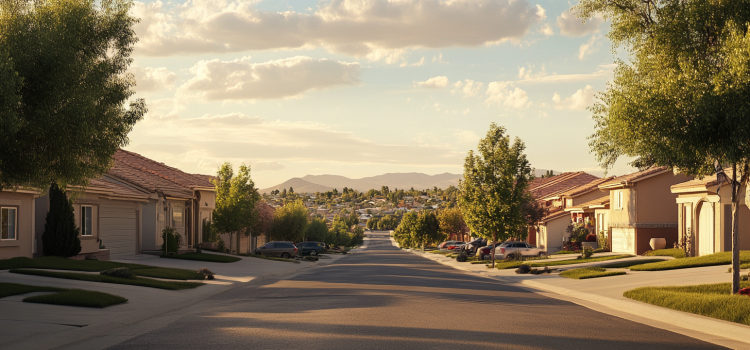

This article is an excerpt from the Shortform book guide to "Bowling Alone" by Robert D. Putnam. Shortform has the world's best summaries and analyses of books you should be reading.
Like this article? Sign up for a free trial here.
How has moving to the suburbs impacted our sense of community? Why do neighbors seem more isolated despite living in similar homes?
Robert Putnam examines the effects of suburbanization on social connections and civic engagement. Suburban growth has led to segregated communities, longer commutes, and the separation of work and home life. These changes have steadily eroded the social bonds that once held communities together.
Read on to discover why suburban growth might be turning America into a nation of strangers.
The Effects of Suburbanization
An argument Putnam finds compelling is that changes to where we live and work have broken traditional communities apart by geographically distancing aspects of society. He writes about the negative effects of suburbanization in Bowling Alone. For instance, as city workers have steadily moved out to surrounding towns, those suburbs have become increasingly segregated by ethnicity and income level. Putnam also notes that, even within these homogeneous suburbs, neighbors tend to isolate themselves and avoid taking part in community activities. The rates of civic engagement are much higher in true “small towns” that have retained their character, rather than those that have been transformed into bedroom communities for big-city commuters.
(Shortform note: The suburban segregation Putnam writes about may be deliberate. In The Color of Law, Richard Rothstein argues that this division results from explicit government policies. Even after the Supreme Court ruled racial zoning unconstitutional, Rothstein writes that government officials resorted to discriminatory zoning laws to maintain racial separation. For example, ordinances that limit neighborhoods to single-family homes exclude lower-income families who can only afford apartments. Because African Americans have been historically discriminated against in the job market, these single-family areas remain predominantly white while areas that allow multifamily dwellings become largely African American.)
The commute from the suburbs to downtown is also a problem. Putnam notes that, instead of spending time with each other, Americans now spend more time alone in their cars than ever before. As urban sprawl continues, this trend grows worse and worse, increasing personal feelings of isolation and taking away valuable time that we might otherwise spend with family, friends, and other social groups. From data correlating travel time with community involvement, Putnam concludes that every 10 minutes added to a commute decreases a person’s community involvement by around 10%—a number that compounds as you move farther from your job.
(Shortform note: American commuting went through a sudden reversal thanks to the rise of remote work during and after Covid-19, despite many businesses’ attempts to draw workers back into the office. However, as of 2025, US highways remain congested, in part due to the rise of home delivery and ride-share services, and partly because remote workers are moving away from urban centers—necessitating longer drives when they do have to go to the city. This change in commuting isn’t necessarily the boon for social capital that Putnam’s numbers might suggest. Working from home means losing the casual workplace interactions that let people create lasting professional relationships, not to mention friendships with coworkers.)
Lastly, Putnam calls attention to the fact that suburbanization has separated work, home, and other social settings so that they never overlap. In the era of tightly knit communities, people who worked together also lived near each other, shopped at the same stores, and went to the same events. You’d run into the same people on your lunch break that you’d meet at your child’s football game. However, when you drive into the city or a different suburb for anything you do, there’s no consistency between the people you meet at work, when you’re walking your dog, or when you’re out buying clothes. Putnam argues that suburbia has turned us into a nation of strangers with no communal identity to act as a seed for social capital.
(Shortform note: Since Bowling Alone’s initial publication, researchers have noted a reduction in the number of “third places” in American society—places outside of home and work where people come together to socialize. In addition to the social settings Putnam lists, these also include public libraries, cafés, and public parks where people congregate. As a result, people spend less time with friends—an effect Putnam already predicted—but it also means that people spend more time at places where they have to work, whether at their jobs or doing chores at home. As “third places” vanish, not only do we have fewer stores of social capital—we also have fewer ways to escape the grind of our daily responsibilities.)

———End of Preview———
Like what you just read? Read the rest of the world's best book summary and analysis of Robert D. Putnam's "Bowling Alone" at Shortform.
Here's what you'll find in our full Bowling Alone summary:
- A look at how social capital in the US is breaking down
- The vital role of social capital in American life and the negative consequences of its decline
- Why the US can't return to the old social structures, and what it can do instead






